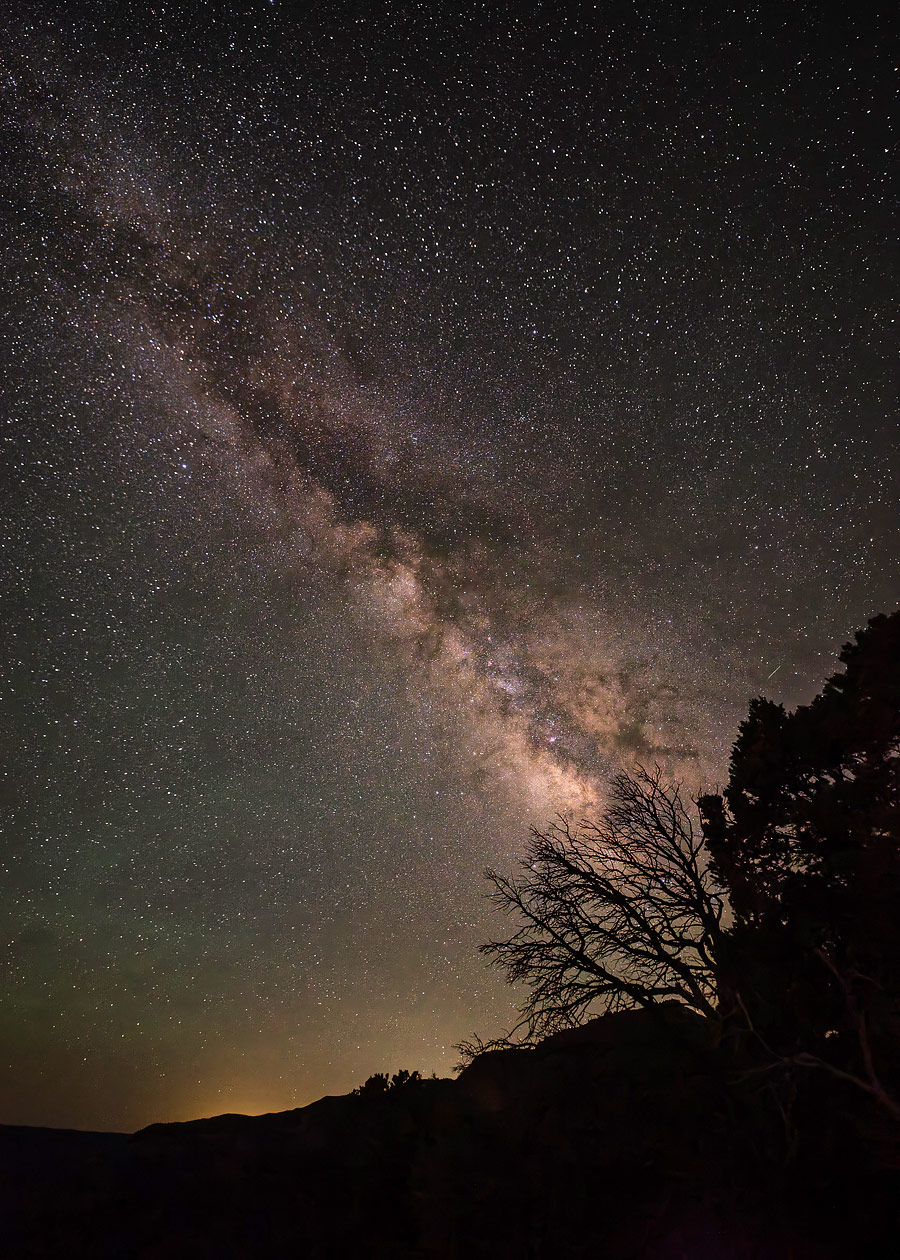Southwest Colorado boasts some of the darkest skies in the continental US, which makes for amazing stargazing opportunities.
On a recent vacation, I lucked into perfect Astro conditions and packed up my gear to go spend a few hours after dark in Mesa Verde National Park.
Summer is the best time for seeing the galaxy, and I settled on the Mancos Valley overlook as my destination and arrived just after sunset. The deep blues of blue hour soon faded to black, and the stars came out – more stars than I've probably ever seen before, along with the wispy, cloud-like appearance of the Milky Way.
I wasn't the only one with the idea to get out for a shoot. I got to share the experience with a couple of other photographers, who offered me some tips. I trailed my tripod on the top of the mesa, with a scraggly, leafless tree in the foreground and plenty of sky above.
The heart of the galaxy sprouted out from the tree and arced across the frame with sparkling stars on either side. This was my first proper attempt at astrophotography, and it was incredibly exciting to see all of the features of the night sky that I was able to capture.
I always imagined there was a lot of post-processing involved in creating the incredible astro images I see online, but I was surprised at how little adjustment was needed to my original image to accentuate the details and pull out some additional color. I may well be hooked, and I will certainly jump at any future opportunities to capture the night sky in all of its glory.
Get a VIP Membership
-
Download all new Landscape Photography Magazine issues
-
Download all new Wild Planet Photo Magazine issues
-
Download ALL back issues (both magazines)
-
Download 2 eBooks worth £19.45
-
Create your Personal Portfolio Page
-
Pin your published pictures to your Portfolio Page
-
We share your pictures with 300,000 social media followers
-
Your shared pictures are tagged on Instagram
-
High priority on picture submission
-
Fast support: we aim to reply within 12 hours


